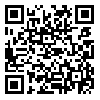BibTeX | RIS | EndNote | Medlars | ProCite | Reference Manager | RefWorks
Send citation to:
URL: http://qhts.modares.ac.ir/article-10-15769-en.html
2- Associate Professor, Department of Persian Literature and Foreign Language, Payamenoor, IR. Iran , Elkhas@yahoo.com
3- Assistant Professor, Department of Persian Literature and Foreign Language, Payamenoor, IR. Iran
The present study aims at investigating and comparing discourse markers (DMs) and their functions in the Qur’anic Surah of Al-0mran. To do this, the collected lexical data of the Sarah analyzed based on the theoretical framework of Bruce Fraser (2005).
The selected samples of this study taken out of the Persian and English translation of the Holy Qur’an. The collected discourse markers classified based on Fraser’s Model including: Elaborative Discourse Markers (EDMs), Contrastive Discourse Markers (CDMs) and Inferential Discourse Markers (IDMs). Sequential discourse markers found, were then coherently configurated. The results of the research revealed that the variety of DMs used by the translators as adjuvant and facilitating strategy in order to decode the deep meaning of the holy manuscript. The results also showed that the most frequency of DMs found in EDMs, which commonly used to elaborate, describe and explain the considered concepts in the Surah. Finally, the comparison of the related translations and identifying the existing sequences of DMs can lead to better exploration of the Holy manuscript of the Qur’an, translated by translators on one hand, and to deep understanding of the holy text on the other hand. The related findings may contribute to the other researchers whose main scope of interest is the text of the Holy Qur’an.
Received: 2018/02/24 | Accepted: 2018/05/18 | Published: 2018/05/18
| Rights and permissions | |
 |
This work is licensed under a Creative Commons Attribution-NonCommercial 4.0 International License. |








